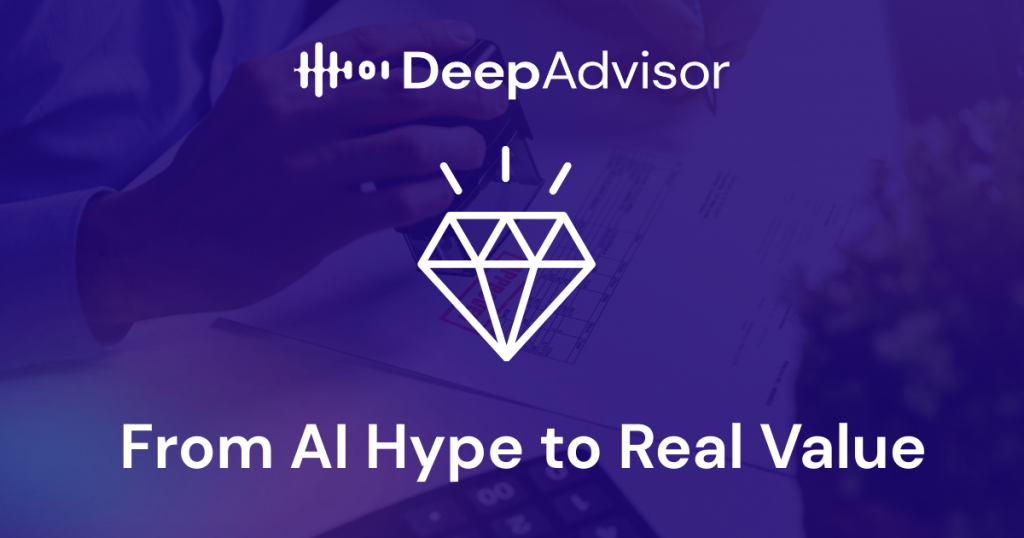The Reality Check: Moving Beyond AI Hype
by Christian Ruck – Co Founder of Deepadvisor
The AI wave is here, and procurement teams everywhere want in. I constantly hear, “We need an AI that can find patterns in our data.” The knee-jerk reaction? Grab a big-name model and call it a day—treating it like a magic bullet for every procurement challenge.
Here’s the truth from someone who’s been in the trenches designing and implementing AI solutions for procurement: This approach is a recipe for expensive failure. Choosing the right AI model is like selecting the right supplier—you need to do your homework.
That’s why we always start with lean prototyping. We test different models in simple chat environments, feeding them real sample data—contracts, category strategies, RFQs, supplier emails. This lets us quickly evaluate results and identify which model actually delivers what we need.
To find the perfect tool for each job, here are the key questions we ask:
1. Speed Demon or Deep Thinker? Finding the Right Balance
First, assess your complexity needs:
Need deep strategic thinking? Think complex supplier risk analysis or preparing for high-stakes annual negotiations. Here, processing time isn’t the enemy—accuracy is everything.
Need lightning-fast routine tasks? Like pulling pricing and terms from dozens of quotes. Every second of delay adds up.
The models:
- For complex analysis: Claude Sonnet 4 (Anthropic), OpenAI’s o1, or Google’s Gemini 2.5 Pro
- For speed: Claude 3 Haiku (Anthropic) or Gemini 1.5 Flash (Google)—often cheaper too
2. Real-Time Data: Do You Need Today’s Information?
If your use case needs current data, you’ve just eliminated half your options. Common scenarios:
- Live commodity price tracking
- Supplier news monitoring (bankruptcies, mergers, supply disruptions)
- Market research for new suppliers
You’ll need AI with web access: Perplexity’s Sonar models or Google’s Gemini 2.5 Pro/Flash.
3. Data Format Matters: PDFs, Excel, and Everything In Between
Your data format drives model selection. Procurement data comes in all shapes:
- Long documents (contracts, RFPs, terms): Need models with large context windows like GPT-4.1 or Gemini family
- Spreadsheets and tables (quote comparisons): Multimodal models like Gemini 2.5 Pro understand visual layouts
- Technical drawings and diagrams: Again, multimodal models that can process both text and images
4. Subject Matter Expertise: When General Won’t Cut It
Some tasks need specialized knowledge or language capabilities:
- Legal/financial deep dives: Claude Sonnet 4 + MAI DeepSeek-R1
- Cost analysis: High-powered models like Gemini 2.5, Grok 3, or GPT-4.1
- Non-English communication: Language-specific models like Jais-30b for Arabic
- Long-form content summary: Strong context understanding required like GPT-4.1
- Video analysis (factory tours, equipment demos): True multimodal models like Gemini 2.5 Pro
5. Building Workflows, Not Just Single Tasks
Real procurement AI rarely involves just one prompt. You’re building processes:
Preprocessing: Converting scanned contracts to searchable text with advanced OCR
Workflow chaining:
- Extract key terms from 10 supplier agreements (Model A)
- Compare against your standard terms and flag issues (Model B)
Human oversight: Where does your procurement expert need to step in for critical decisions?
6. The Non-Negotiables: Compliance and Budget
Two hard constraints that can’t be ignored:
Data sovereignty: Can your supplier data leave the US/EU? Hosting location dramatically impacts your model options and regulatory compliance.
Cost control: Per-query pricing varies wildly. That premium model might work for occasional strategic analysis but could blow your budget on high-volume routine tasks.
7. Making It Real: Implementation Strategies
You’ve picked your model and defined your use case. Now what? Here are four paths forward:
Option 1: Internal IT Development
The traditional route:Hand it off to your IT team.
Reality check: Often slow, expensive, and frustrating. IT may lack procurement domain knowledge and can’t keep pace with rapidly evolving AI capabilities.
Option 2: AI Features in Existing Platforms 🔧
The path:Use AI tools built into your current P2P or SRM systems.
The catch: Usually based on older tech, limited flexibility, and confined to that platform’s processes. Customization is painful.
Option 3: Specialized Point Solutions
The appeal: Best-in-class tools for specific tasks (contract analysis, supplier discovery).
The problem: You’ll need multiple solutions, creating a fragmented tech stack that’s expensive to manage.
Option 4: Integrated AI Platforms
The modern approach: Platforms like DeepAdvisor offer multi-model, multi-cloud flexibility.
What you get:
- Access to multiple AI models and 200+ pre-built procurement use cases
- Integrated data processing for any file format
- Low-code environment—procurement experts can build workflows without coding
- Seamless API integration with existing systems
- Expert team keeping you current with AI innovations
The Bottom Line: Strategy First, Technology Second
Successful procurement AI isn’t about jumping on the latest trend—it’s about strategic thinking on two levels:
- Model selection: Matching the right AI tool to each specific challenge
- Implementation approach: Choosing a platform that’s flexible, scalable, and future-ready
The real skill isn’t just finding the best hammer for each nail. It’s having a toolkit that lets you deploy those hammers quickly, efficiently, and at scale.
Get this right, and you’ll transform AI’s promise into measurable procurement value—from smarter sourcing to strategic supplier development.
Ready to move beyond the hype? The future of procurement isn’t just AI-powered—it’s strategically AI-powered.

